Advertiser Disclosure: Eye of the Flyer, a division of Chatterbox Entertainment, Inc., is part of an affiliate sales network and and may earn compensation when a customer clicks on a link, when an application is approved, or when an account is opened. This relationship may impact how and where links appear on this site. This site does not include all financial companies or all available financial offers. Opinions, reviews, analyses & recommendations are the author’s alone, and have not been reviewed, endorsed, or approved by any of these entities. Some links on this page are affiliate or referral links. We may receive a commission or referral bonus for purchases or successful applications made during shopping sessions or signups initiated from clicking those links.
You’ve likely taken a flight when one of the pilots said something like, “We’ll have a quick taxi over to Runway 24” or “We’re landing today on Runway 7.”
Wait, you perhaps thought, our airport doesn’t have 24 runways! Or When I took off from here last week, the pilot said it was Runway 25! But it’s the same runway!
Or you might’ve caught a news report about an airliner returning to an airport because of some mechanical issue.
“The plane landed safely on Runway 16.”
Maybe you’ve wondered how runways get their names. Or you’re dying for something trivial to drop on the person seated next to you.
But here’s a quick, crude lesson in how runways get their names and numbers. (I know pilots, air traffic controllers, and other aviation professionals in the audience have plenty of clarifications, explanations, and other information for us, so I invite them to contribute all that in the Comments section.)
360º of Separation
Here’s the fast and quick explanation: runways are named for the direction they travel on a compass. 36 (or 360) is north. Go clockwise from there.
Here’s the more detailed explanation. Compasses are 360º around. A 0º compass bearing is due north, 90º is east, 180º is south, 270º is west. Simple enough, right?
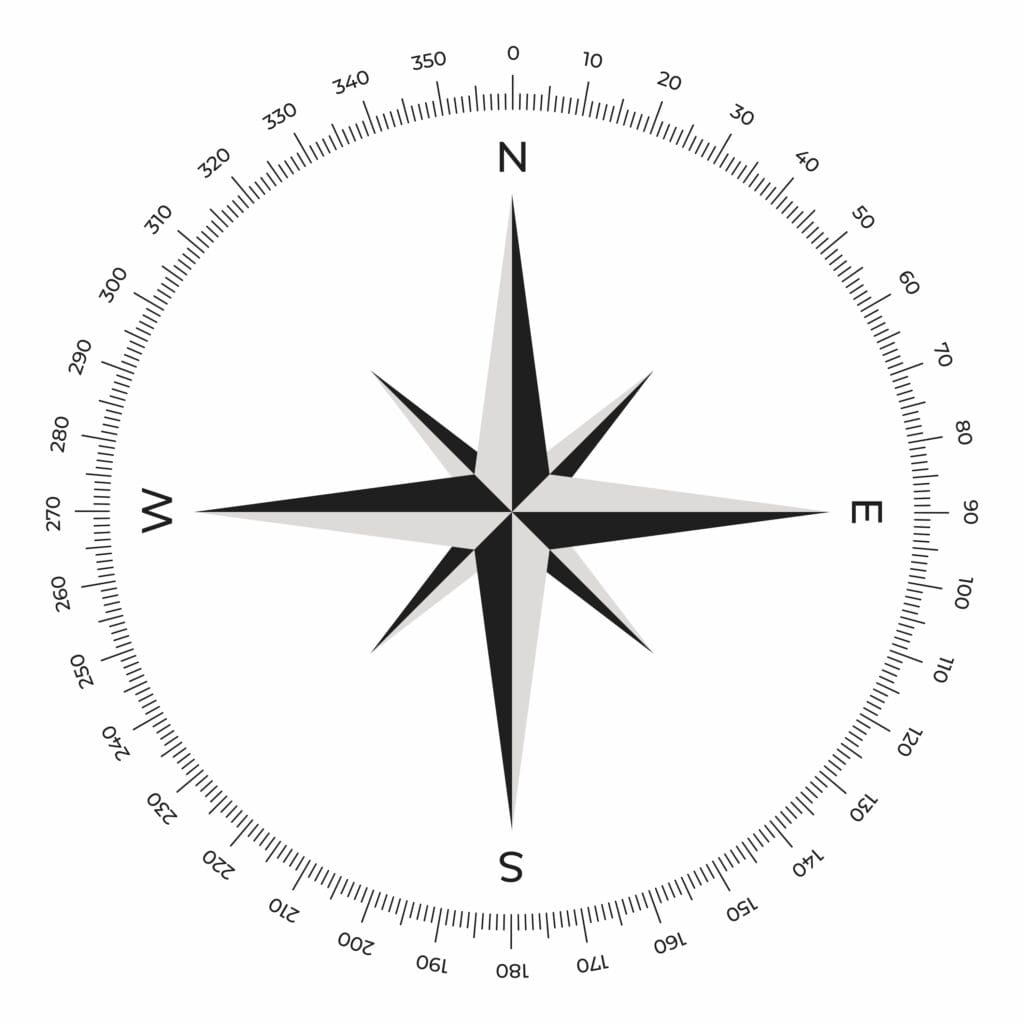
Runways are named for the compass bearing in which they travel — except the final digit is dropped. Here’s a compass with those bothersome final digits out of the picture.
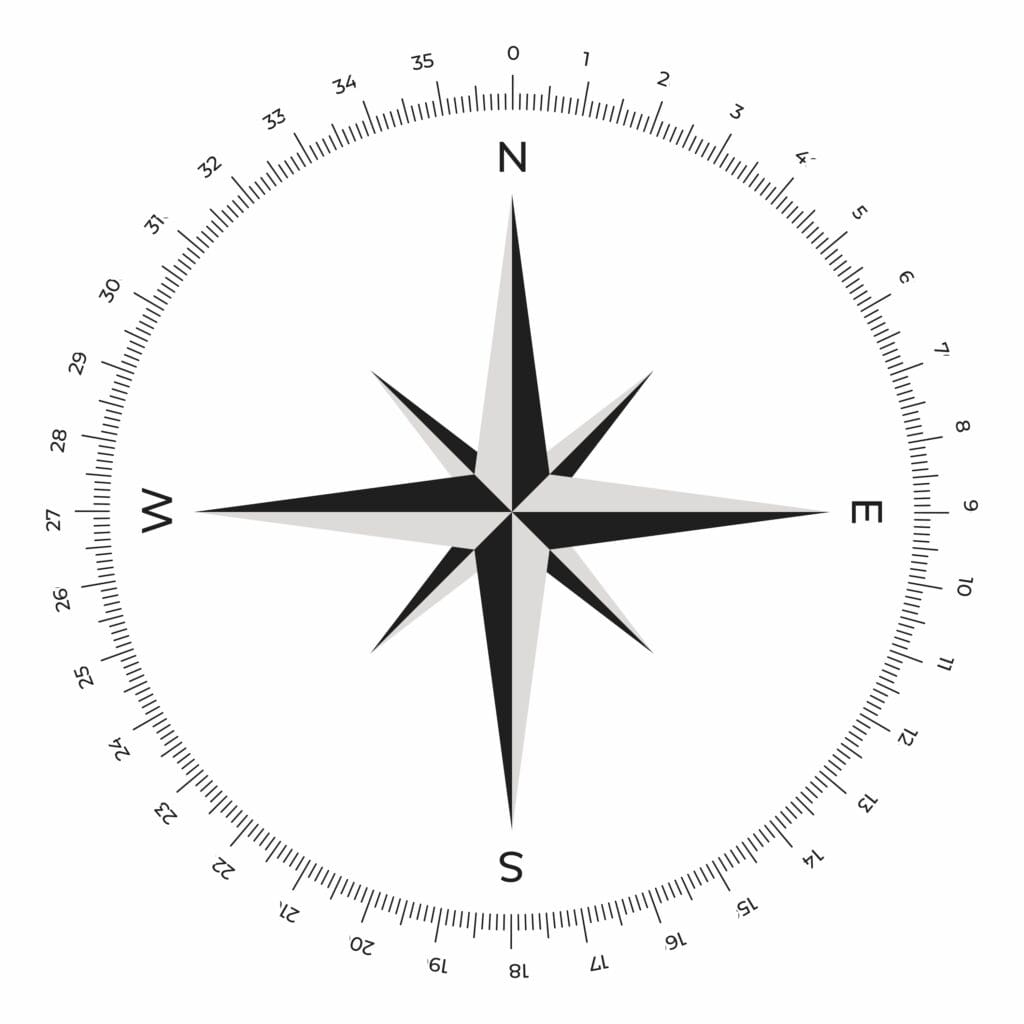
For example, a runway named “33” is pointed approximately at 330º bearing — or northwest-ish.
Runway numbers are rounded to the nearest 10º. For example, a runway’s true magnetic compass heading could be 326º. It’s then rounded up to 330º or “33.” If it were 324º or lower, it would be “32.” Get it?
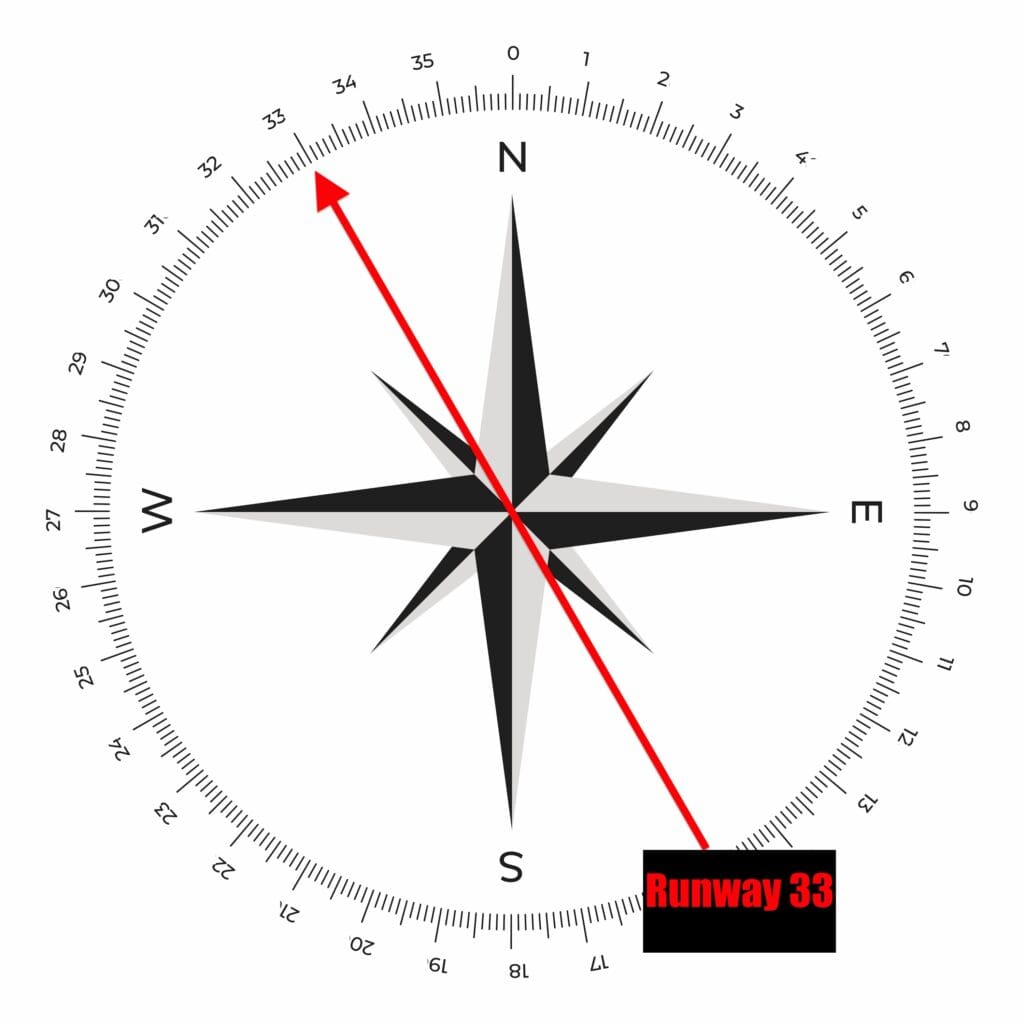
Planes generally take off and land against the wind. So, if the wind is coming from the opposite direction, Runway 33 “turns into” Runway 15 — it’s 180º compass opposite.
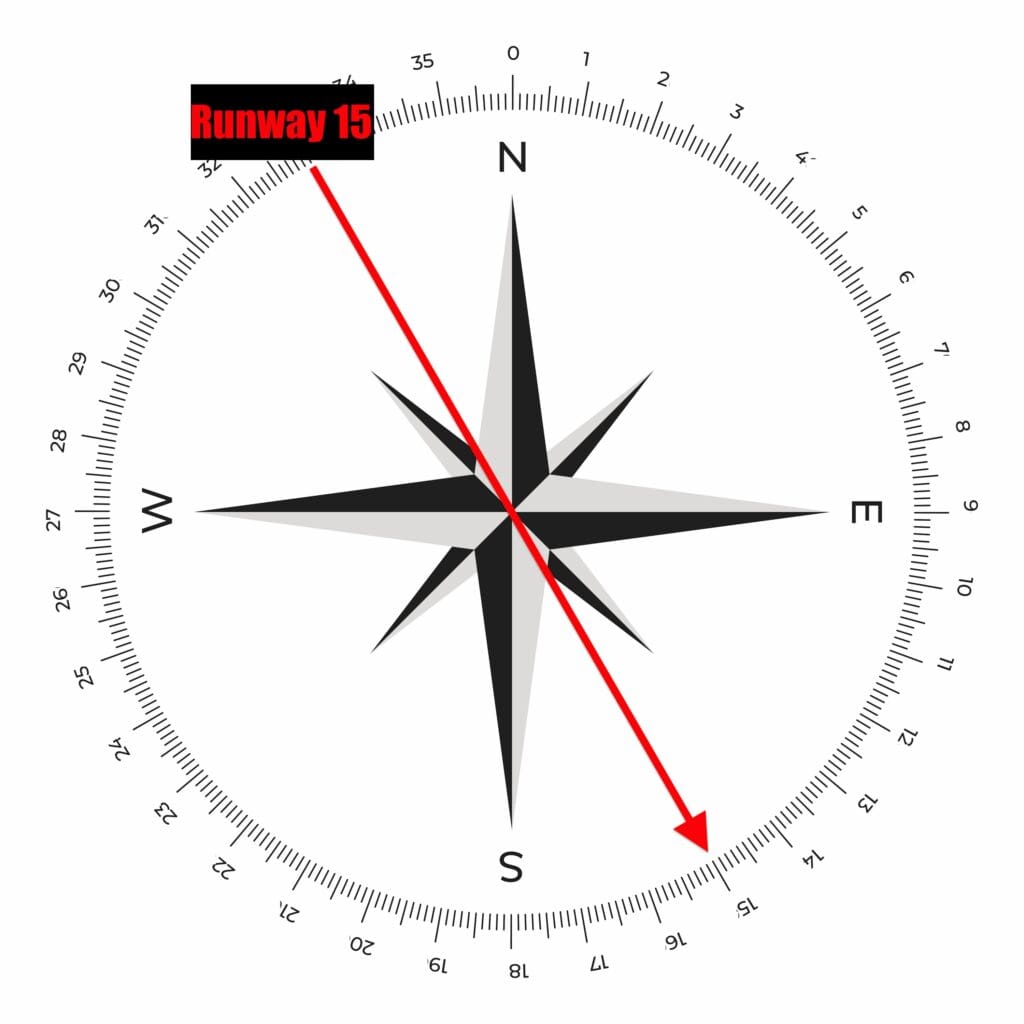
It’s the same landing strip. Same long stretch of concrete or asphalt.
To put it crudely, the number tells pilots which direction they’re taking off into or landing.

Here’s a real-world example: Hollywood-Burbank Airport (BUR).
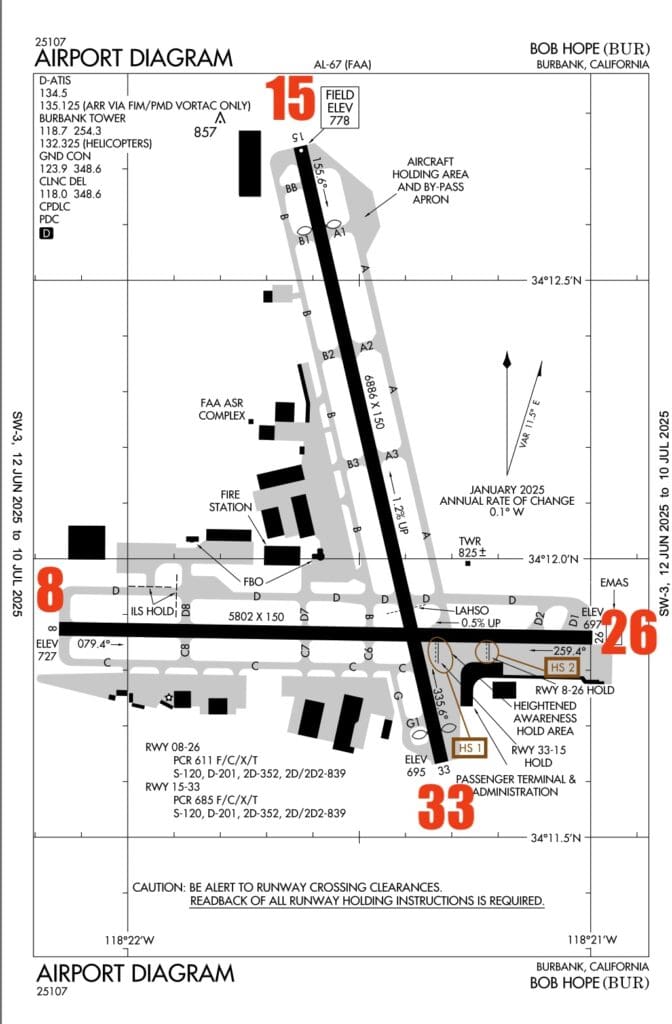
Most of the time, wind dictates that planes depart Burbank from Runway 15 (toward the southeast). They usually land on Runway 8 (or east; that runway is equipped with an ILS or “Instrument Landing System.” We’re not even going to touch that today.) or sometimes Runway 15. When the Santa Ana Winds come roaring from the north, flights depart from and arrive on Runway 33 (northwest). (Runway 8 is still sometimes used during Santa Anas, depending on windspeed.)
So, if you hear a pilot say, “We’re departing from Runway 3 today,” picture a compass with 0 at the top, and 9 on the right. You’ll take off to the north-northwest.
Some airports have multiple runways pointing in the same direction. Those are labeled “left” and “right.” For example, Boston’s Logan Airport four runways designated “left” and “right.” For example:
- 22 Right and 22 Left — which “become” 4 Left and 4 Right, respectively.
- 33 Left and 33 Right — which “become” 15 Right and 15 Left, respectively

Some airports have three runways pointed in the same direction. Those are designated “left,” “center,” and “right.”
Other quick runway tidbits:
- North runways are numbered “36” — as far as I know, there aren’t any runway 0s.
- Runway numbers are pronounced by their individual digits. For example, Runway 22 is “Runway Two-Two.” Runway 05 is “Runway Five.” (At least, I’ve never heard anyone say the “Zero”)
- Runways can be renumbered. I’ve noticed this after runway construction projects. Their magnetic compass headings shift slightly over the years. Fargo’s Hector International Airport (FAR) underwent a big runway reconstruction several years ago. When I grew up, it was Runway 35-17. Some 30 years later, its heading changed slightly — and it’s now Runway 36-18. It’s still the name north-south direction, just a couple of clicks different. Harry Reid Las Vegas Airport’s southern complex runways went from being 25L-7R and 25R-7L to 26L-8R and 26R-8L.
Here’s a sign for a runway intersection. “Runway Eight Right” is to the left. “Runway Two-Six Left” is to the right. Extra nerdiness: the “M3” means the plane is currently on taxiway M3 (or Mike Three.) 8R departs to the east, 26L departs to the west.
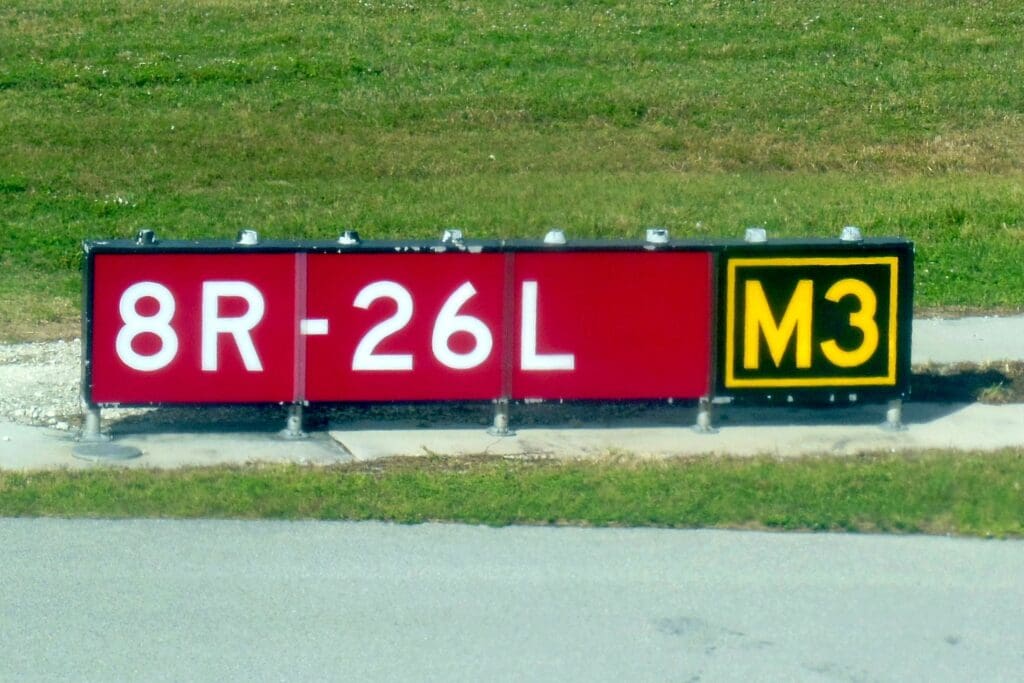
You Rarely “Sit” or “Wait” or “Taxi” on the Runway
Here’s something else you’ve likely heard.
“We landed and then sat on the runway for 20 minutes!” Or, “They pulled the JetWay, then taxied on the runway forever and waited!”
I’m pretty sure no one “sat” or “waited” on a runway for extended periods of time. For a few seconds immediately before taking off? Sure. That happens all the time.
Planes taxi on taxiways. Some smaller airports don’t have taxiways that span a runway’s full length. The runway kind of serves as both. But when you’re at a major airport and your plane turns here and there, you might cross a runway (or three). But you probably won’t be taxiing or parked on a runway. There might be times when you briefly taxi on a runway. I’m not saying you never have.
When your plane is not at the gate but you’re waiting for some reason, you’re likely on a taxiway. (“The penalty box” is a colloquial term for part of a taxiway where planes sit for a while.)
Final Approach
Long story short: runways are named for the magnetic compass direction in which they’re pointed. Think of 36 as north, 9 as east, 18 as south, and 27 as west. Adjust from there.
Advertiser Disclosure: Eye of the Flyer, a division of Chatterbox Entertainment, Inc., is part of an affiliate sales network and and may earn compensation when a customer clicks on a link, when an application is approved, or when an account is opened. This relationship may impact how and where links appear on this site. This site does not include all financial companies or all available financial offers. Opinions, reviews, analyses & recommendations are the author’s alone, and have not been reviewed, endorsed, or approved by any of these entities. Some links on this page are affiliate or referral links. We may receive a commission or referral bonus for purchases or successful applications made during shopping sessions or signups initiated from clicking those links.


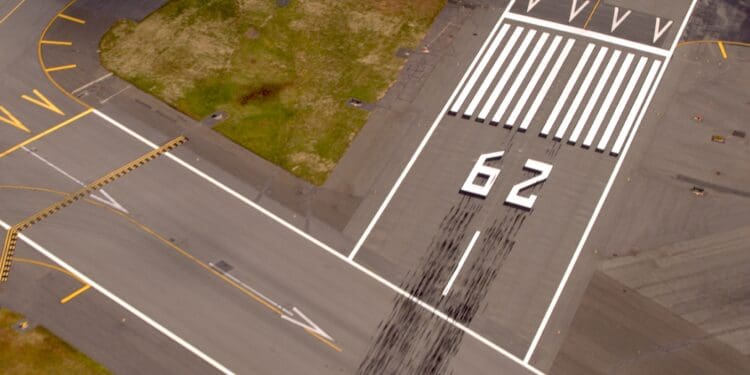
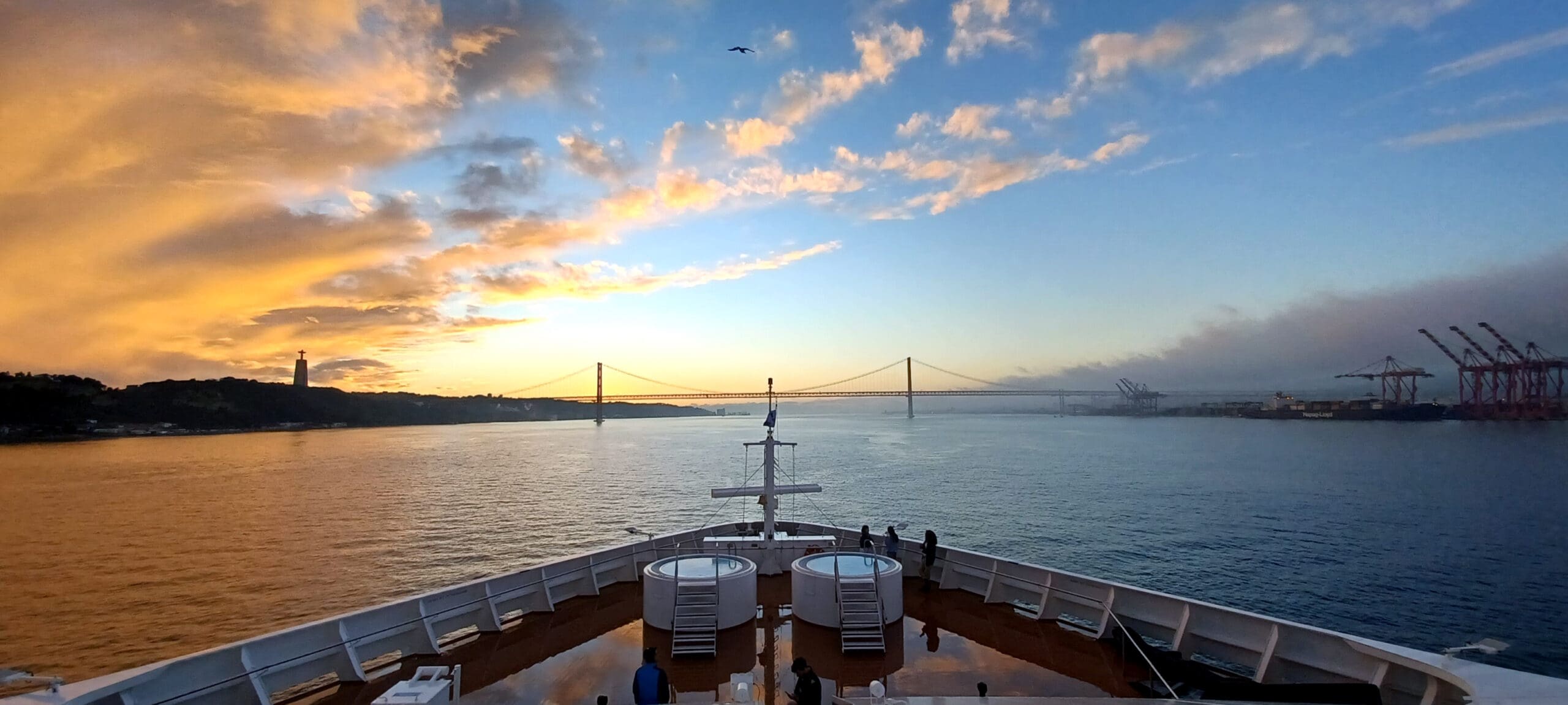








What happens when there are more than three runways pointing in the same direction (Eg: Atlanta)?
At least at ATL, no more than two runways have the same runway number.
US Military ATC stateside use ICAO runway number phraseology for runways 010-090. EG: “runway zero one” or “runway zero two” …etc
@Tom…more than 1 set of parallel runways (LAX) use adjacent magnetic “course” numbers for the “primary use” runways. For LAX that would be 24L / 24R on the north side and 25L / 25R on the south side. It can get more complicated like DFW with “triples” on the east side. 17R / 17C / 17L and 18R / 18L on the west side